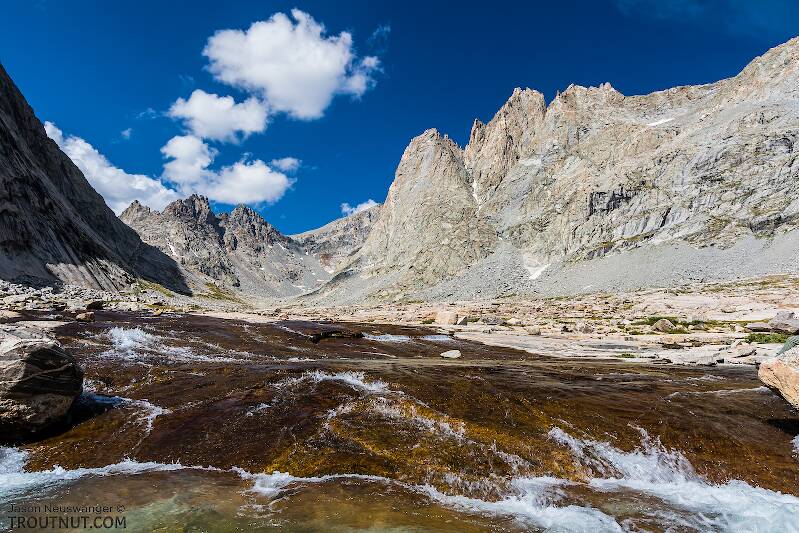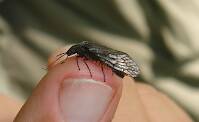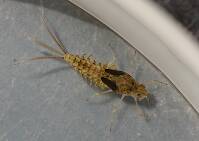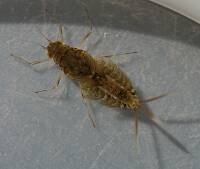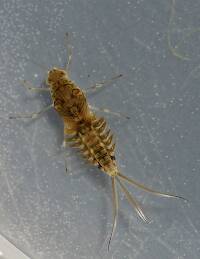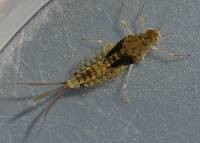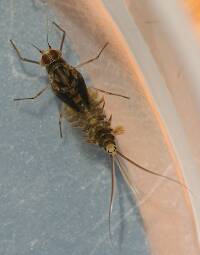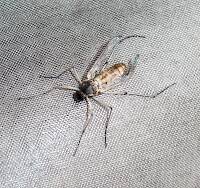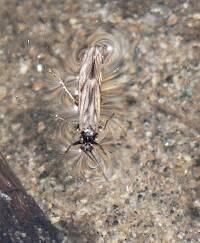
Hex Mayflies
Hexagenia limbata
The famous nocturnal Hex hatch of the Midwest (and a few other lucky locations) stirs to the surface mythically large brown trout that only touch streamers for the rest of the year.
Featured on the forum

This wild-looking little thing completely puzzled me. At first I was thinking beetle or month larva, until I got a look at the pictures on the computer screen. I made a couple of incorrect guesses before entomologist Greg Courtney pointed me in the right direction with Psychodidae. He suggested a possible genus of Thornburghiella, but could not rule out some other members of the tribe Pericomini.

Troutnut is a project started in 2003 by salmonid ecologist Jason "Troutnut" Neuswanger to help anglers and
fly tyers unabashedly embrace the entomological side of the sport. Learn more about Troutnut or
support the project for an enhanced experience here.
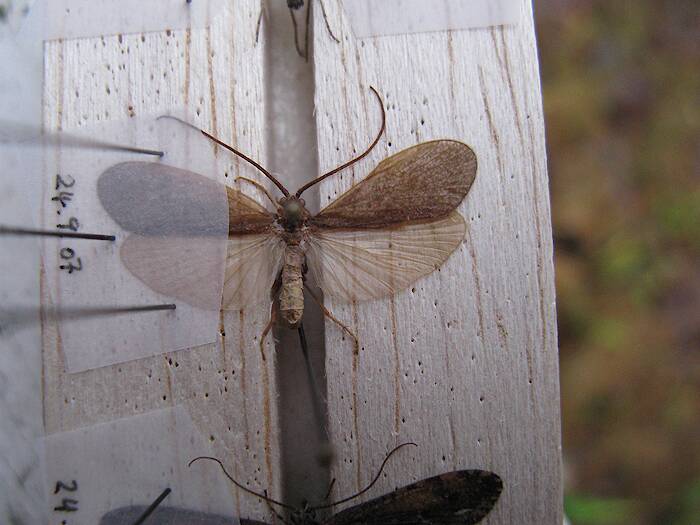
Taju on Nov 17, 2008November 17th, 2008, 1:44 am EST
Is it possible to determine this species at least to the genus level?
Taju on Nov 17, 2008November 17th, 2008, 1:48 am EST
....and it is from Kentucky, 24.9.2007.
Creno on Nov 17, 2008November 17th, 2008, 3:19 am EST
The rounded wings and relatively thick antennae look like Pseudostenophylax sparsus. But wing venation is out of focus so cannot be sure.
Taju on Nov 17, 2008November 17th, 2008, 3:46 am EST
Are there any available pictures of the genitalia? My first thought was that it is like our Stenophylax-species (in Finland):) I suppose this is a common species?
GONZO on Nov 17, 2008November 17th, 2008, 4:54 am EST
Creno,
I remembered your comment about the thickness of P. sparsus antennae (made elsewhere), and given the limited choice of limnephilids represented in the collecting record for KY, P. sparsus seemed likely. My question: Other than the thickness of the antennae, what might help distinguish between (especially closed-wing) photos of Pseudostenophylax and Ironoquia?
I remembered your comment about the thickness of P. sparsus antennae (made elsewhere), and given the limited choice of limnephilids represented in the collecting record for KY, P. sparsus seemed likely. My question: Other than the thickness of the antennae, what might help distinguish between (especially closed-wing) photos of Pseudostenophylax and Ironoquia?
Creno on Nov 17, 2008November 17th, 2008, 5:33 am EST
Gonzo - yours is a better memory than mine - I will have to go back and see what I said then. This could indeed be Ironoquia - the hind wing doesn't look quite deep enough. A clear picture of the forewing (or hindwing)venation may resolve the question. At least in NA I believe the origination of vein R2 on the discoidal cell is anterior of the "chord" a greater distance than the tallest height of the discoidal cell for Ironoquia. In Pseudostenophylax, the R2 origination is much closer to the "chord," less than the discoidal height. If you get a good photo of the forewing, or have the specimen in hand it is quite apparent. I have sent Taju a pm for his email and I can send him a figure of the genitalia. I will also send the Ironoquia and he should be able to readily see the difference.
GONZO on Nov 17, 2008November 17th, 2008, 5:41 am EST
Thank you. :)
Taju on Nov 18, 2008November 18th, 2008, 1:04 am EST
Thanks to the figures by Creno it is possible to ID the species as Ironoquia punctatissima (Walker, 1852). Thanks also to Gonzo :)
Quick Reply
Related Discussions
Topic
Replies
Last Reply
0
Sep 23, 2006
by Litobrancha
by Litobrancha
1
Aug 30, 2010
by GONZO
by GONZO
19
Jan 20, 2008
by Troutnut
by Troutnut

